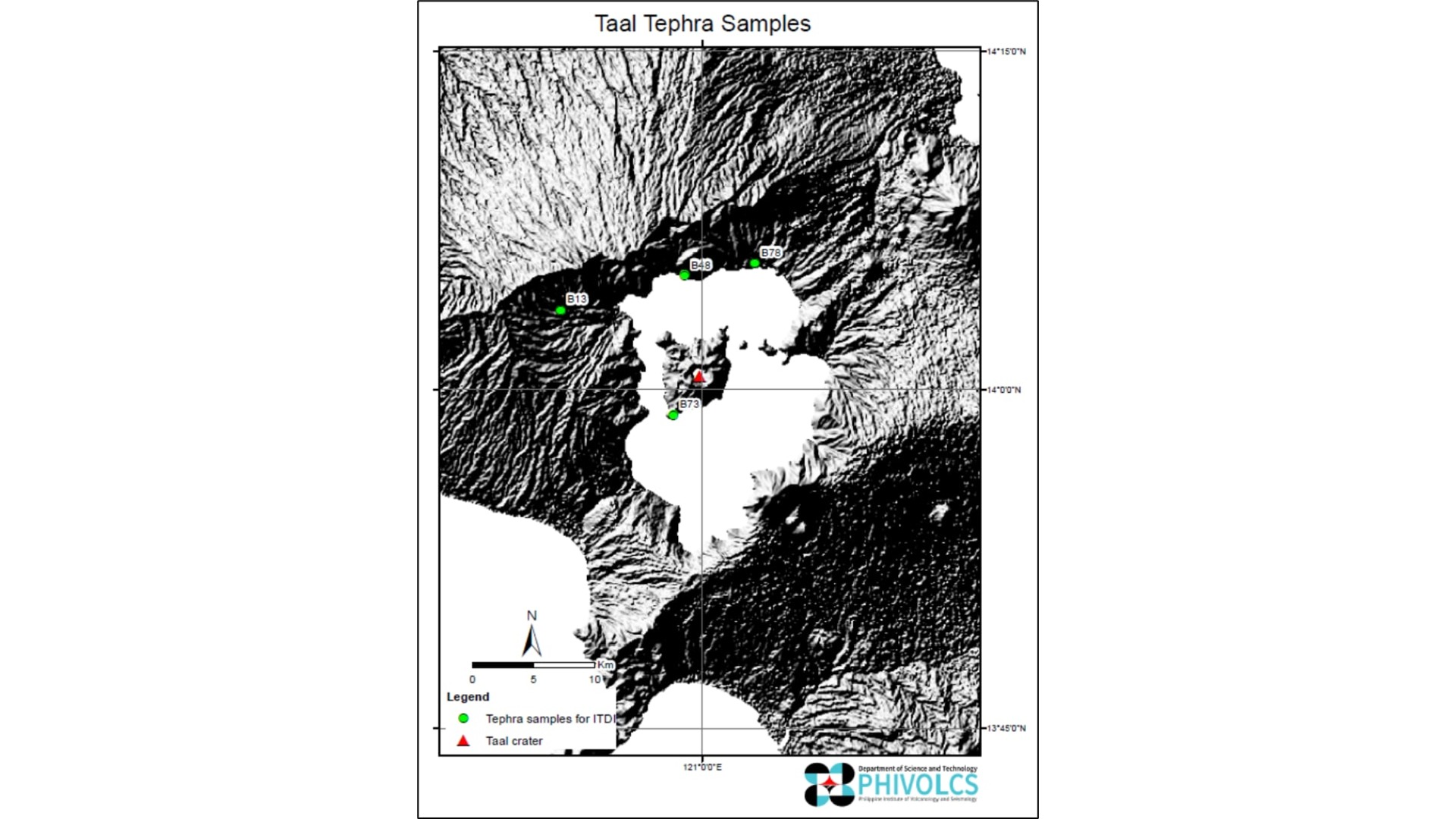The Department of Science and Technology (DOST) explored the potential use of tephra ejected by Taal Volcano in Batangas Province.
Researchers from the DOST-Industrial Technology Development Institute (DOST-ITDI) studied tephra, or rock fragments from the volcanic eruption.
“Research and development are drivers of long-term economic growth and social progress,” said DOST Secretary Dr. Renato U. Solidum, Jr. “This study provides opportunities to the construction industry and local government units to utilize the produced volcanic ashfall in the event of a volcanic eruption. In the study to convert tephra from Taal Volcano to construction materials, we have avenues to support our cement industry such as potentially lowering the production cost.”
The study used volcanic ash collected from Batangas Province, in January 2020. In the volcanic eruption four years ago, the cloud ash covered 10 municipalities with an area of 375.46 sq. km. These included Agoncillo, Alitagtag, Balete, Cuenca, Laurel, Lemery, Mataas na Kahoy, San Nicolas, Santa Teresita, and Talisay.
DOST-ITDI Director Dr. Annabelle V. Briones said, “The challenge of managing the voluminous tephra deposits prompted us to explore using it as a mineral admixture in construction.”
The lead authors of the study, Michael S. Lagmay, Admer Rey C. Dablio, and Ruth L. Damian of STD, said that the characteristics of the samples taken from different areas looked promising and might show great prospects for the construction industry.
Andrés Játiva and his co-authors, in their 2021 article on volcanic ash (VA) or fine tephra, considered VA as a suitable material to replace portland cement clinker for use as a binder in cement production. Further, the American Society for Testing and Materials (ASTM) standard C618-93 for fly ash and natural pozzolan considered VA as a natural pozzolan. Generally, cement contains 35-40% lime, 40-50% alumina, up to 15% iron oxides, and preferably not more than 6% silica. Its principal cementing compound is calcium aluminate.
In the study, Dablio said, “We characterized and compared measurement results of the collected tephra against the nearest relevant Philippine National Standard (PNS) 07:2018 Pozzolan Cement to check for their potential benefits to the country’s construction industry. PHIVOLCS collected four ashfall samples from strategic locations.”
Damian explained that the results showed the collected tephra met the standard specifications for silicon dioxide, magnesium oxide, and sulfur trioxide. However, the levels of aluminum oxide, ferric oxide, and other minerals exceeded the threshold limits. High free oxides can decrease the workability of the admixture, but on the other hand, they can decrease the porosity of the cement or concrete mixture.
The June 2020 bulletin of the Global Volcanism Network reported that the 2020 Taal Volcano eruption had a Volcanic Explosivity Index (VEI) of 4, equivalent to 1,000 km3 or 1 million m3 of erupted tephra volume. With this figure, the prospects for the construction industry significantly increase.
With these results, DOST-ITDI presented the study during the First European Green Conference (EGC) held in Vodice, Croatia, where the Kemija U Industriji, an international publication of the Journal of Chemists and Chemical Engineers in Croatia, released the published study on September 18, 2024.
KUI Journal is indexed in the Emerging Sources Citation Index (Clarivate), Academic Search Ultimate (EBSCO), DOAJ, and Chemical Abstracts Core (American Chemical Society).



